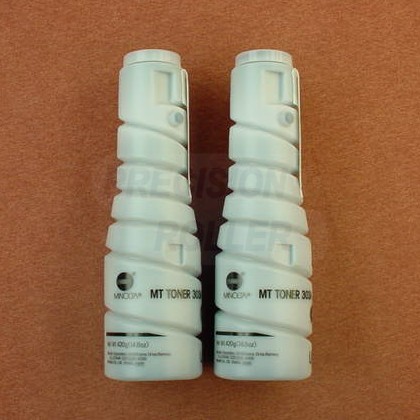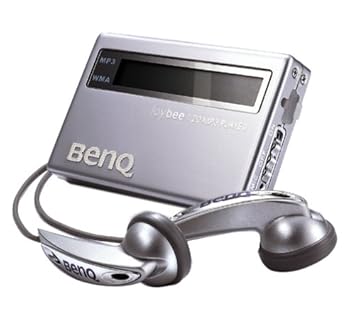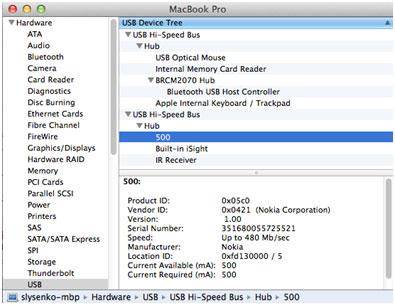SCSI stands for Small ComputerSystem Interface.
A standard for high-speed connections to peripherals.
Right click on SCSI Controller, and select Update Driver On the window titled: Update Drivers, select Browse my computer for driver software Select the folder containing the driver you downloaded (Figure 3) Windows should ask you if you want to install the unsigned driver (Figure 4), select install this driver software anyway. Yes, as you have noticed, there are some (relatively expensive) USB-to-SCSI adapters. However, it is not certain that these will work under a modern Mac operating system version, so you would really have to check that first before you buy. The adapters were originally intended for existing external SCSI devices when the iMac was introduced. SCSI and several other legacy technologies were eventually phased out by Apple, starting with Steve Jobs' introduction of the iMac G3 in May 1998. As SCSI drives have become hard to find for replacement in vintage Macs, a SCSI2SD adapter can allow the use of a Secure Digital (SD) card in place of a hard disk drive. Many old Macs used SCSI connections for internal and external hard drives. Modern-day Macs use SATA for internal hard drives, and USB or Thunderbolt for external drives. So we need to find a way to.
Source and Reference
History
SCSI has it’s roots in the mainframe world, but it’s firstimplementation in the PC world came soon after the first PC.Shugart Associates devised an interface that they designated theSASI, or “Shugart Associates Standard Interface” They proposed thatSASI be adopted by ANSI for small computers, but during the workrequired for ratification, they discovered the process would taketoo much effort, and that the IPI groups were already well intotheir effort. (which had many features the same as SASI) A decisionwas made to take features of both interfaces, and put forth a newspecification for a new interface, SCSI was born, and ratified in1986 by ANSI. Since then, many have said that the original spec.was not tight enough, and that it allowed Manufacturers to makedrives that met the ANSI spec., but would not talk to each other.Recently, the ANSI SCSI committee has proposed newer, tighter, moreextended specs., for SCSI-2, and now SCSI-3.
Usage
SCSI is used to connect peripherals to an computer. It allowsyou to connect harddisks, tape devices, CD-ROMs, CD-R units, DVD,scanners, printers and many other devices. SCSI is in opposite toIDE/ATA very flexible. Today SCSI is most often used servers andother computers which require very good performance. IDE/ATA ismore popular due to the fact that IDE/ATA devices tend to becheaper.
SCSI Hard Drives
The normal internal cable for SCSI is a 50 conductor ribbon,with all odd numbered conductors grounded. Two conductors, numbers25 & 26, are often left not-connected, as they deal with Terminatorpower, and can be easily shorted by cable reversals. There are notwists in this cable, and it’s length may be a maximum of 6 meters.But one is advised to use minimum lengths to improve timing. Up toseven drives, or devices may be attached to an SCSI cable. Each isdaisy-chained on the cable, or, when a device has two connectors,another cable may be “spliced” into the chain starting at thesecond connector, and continued on. Care must be taken to insurethat cables and connectors are not reversed, as this would shortpin 26 (TERMPWR) to ground, and likely damage the drive orcontroller. Also, as explained earlier, the terminating resistorsshould remain only on the controller (Host Adapter) and the LASTdrive on the cable, regardless of it’s address. The DifferentialSCSI requires balanced lines, and is used mostly on high-endworkstations.
APPLE SCSI
Unlike in the PC world, the Apple standardised on one driveinterface, SCSI. Also, Apple standardised on a 25 pin connector forexternal connections. However, Apple decided not to implement thecomplete ANSI spec., so one must be careful that peripherals usedare certified to work with Apple’s SCSI bus. Apple also developedit’s own pin-configuration. The Apple and Future Domain 25-pin SCSIconnectors are as close to “Standards” as there are in the world ofPCs. But the real ANSI Standard called for a 50 pin connectorcommonly referred to as a “Centronics” type (made popular by theCentronics printer company). Instead of the 25 staggered pins ofthe Apple & Future Domain type connectors, the Centronics type uses2 parallel rows of 25 pins. This arrangement allows the use ofextra grounds for better isolation.
Hardware

The basic SCSI bus can connect up to seven devices and 1 hostadapter on it, the bus uses 3 address lines which gives you apossibility of 8 addresses. Each device is assigned a SCSI addressfrom 0 to 7 where 7 is reserved as the host adapter. The remaining7 addresses are used for any device connected anywhere on the bus.Each address is assigned a priority, where 7 (the host adapter) hasthe top priority and 0 beeing the lowest priority.
Each device can be assigned any address (except for address 7) andis user selected via DIP switches or jumpers. No two devices canhave the same address on the same SCSI chain, internal norexternal. Usually you can assign any address number to a device aslong as the software or drivers for the specific device allow it.Some devices will not let you the freedom of selecting the address,in these cases you must make sure that the predifined address onthe device does not conflict with other devices already in use. Forexample some systems will force you to assign the address 0 on theboot hard drive, this is true for most host adapters that emulatethe Western Digital WD1002 controller.
Single Ended or Differential
The original design of the SCSI standard allowed two differenttypes of buses, the single ended and differential. Single endedSCSI uses a single ended electrical signal (also refered to asunbalanced), this means that a single wire is used as a commonground return path for all signal lines. As of in the differentialSCSI (refered to as balanced) each signal line has it’s own returnpath and is also isolated from the reference ground. The cable usestwisted pair wiring, this makes it less prone to electricalinterference and to picking up noise. This means that differentialSCSI needs more wires and more electronics, and consequently alsomeans higher prices, so as you guest most users systems use singleended SCSI because their cheaper and work good in mostapplications, like small systems and where electrical noise is nota problem.
Since differential SCSI is less prone to electical interference thecable lengths are greatly improved. On single ended SCSI, the cablelength is limited to 6 meters (around 20 feet) and withdifferential SCSI the cable length can span up to 25 meters (about82 feet). The shortest cable must not be less than 30 centimeters(12 inches) between each device. For example, if you have 3 deviceconnected to the host adapter, the minimum lenght of the cableshould be 1 meter (3 feet).

Cabling
Internal devices use a 50 pin dual inline connector and a flatribbon cable. Multiple connectors are usually attached to it inincrements of around 12 inches (yet they might be farther apart).You can use any connector on the cable and in any order.
External devices use a different cable and connector for obviousreasons. The cable is usually consisted of 25 twisted pair wires,so you get a total of 50 wires. Each external device has twoconnectors on it’s back side, they are connected to each other pinfor pin and are used to connect the next device in the daisy chainor to connect the terminator. This means that you need a cable foreach additional external device.
The standard SCSI connector has 50 pins in two rows and is termedas the type A connector from the SCSI specifications, thisconnector looks like a Centronics printer connector yet has 50 pinsinstead of 36. Some devices use a regular 25 pin D-shell connector,this connector is good, but can only handle single ended SCSIbecause they don’t have enough connections.
SCSI-2 specified a new cable for wide SCSI, since the original TypeA cable does not have enough connections on it. The SCSI-2specifications indicates the use of a second cable described as theB cable, yet most developers did not follow this path and use asimilar cable known as the type P cable. This cable has a 68 pinconnector arranged in two rows of 34 pins just like the B cable.The difference is in the pin assignments on the connector. The Bcable has since been abandoned and the standard is now the Pcable.
SCSI Termination
On SCSI drives, the Host Adapter also has resistors. These areneeded to terminate both ends of the bus. Since the SCSI bus canhave up to 7 devices attached to it, only the Host Adapter and thedevice farthest from it will retain the resistors. All devicesin-between should have theirs removed. With the advent of increaseduse of SCSI for peripherals comes the chance that one day you’llneed an SCSI terminating resistor. Prepare for a shock, because youmight be very surprised at the prices charged, for what you get.Many Manufacturers still have SCSI peripheral hardware priced forthe Workstation market, not the PC market. We may see these priceserode as more PCs adopt SCSI as their disk interface of choice, butfor now be prepared to pay a premium for anything to do with SCSI.So here you are, with a disk drive mounted internally, and a CD-ROMhanging off the back of the PC. Everything looks great, but it justdoesn’t work… Maybe it doesn’t even recognise the CD-ROM. You’vechecked the connectors, and everything looks good… So what’s theproblem? Well, did you check the terminators? (Say Whaaat??)Improper termination of an SCSI bus can raise havoc with the HostAdapter’s interface circuit, and result in missing peripherals, orintermittent operation and possible loss of data. Well, here’s away to build an inexpensive terminator that will connect to thesecond SCSI connector on many SCSI peripherals.
SCSI termination is very important, there must be two terminator oneach SCSI chain, one at the beginning and one at the end devicechain. The terminator must be within 10 centimeters (4 inches) ofeach end of the chain on the bus. Take a look at figure 1 to seewhat is acceptable and what’s not when terminating SCSIdevices.
The following ARE acceptable:
The following ARE NOT allowed:
Figure 1: Correct and wrong way of connecting SCSIdevices

| Note: When putting the host adapter in the middleof the chain, you must disable the host terminators. If this isimpossible you MUST put the host adapter at either end of thecable. |
Passive Termination
Termination of the SCSI chain is achieved by using resistors.The termination will give you an electrical equivalent of a 3 voltvoltage source in series with a 132 ohm resistor. This voltage isachieved by connecting a 220 ohm resistor to the TERMPWR line andthrough a 330 ohm resistor to ground. All signals must terminatedat both ends of the bus in this fashion.
Figure 2: Passive termination

Active Termination
Active termination is achieved by using a voltage regulator tosource a 2.85 VDC level in series with a 110 ohms resistor to thesignal line. This assures a constant voltage and helps eliminatenoise in a greater way than with passive termination, wherevariations in TERMPWR affects greatly the voltage actually beingput on the signal lines. An example of how an active terminatorlooks like is presented in figure 3.
Figure 3: Active termination
This type of termination is critical when using many devices andwhen using long cables. If you have many external devices connectedon the bus this would also be good alternative.
Differential Termination
When using differential SCSI, the termination is different. Theyuse a network composed of 3 resistors (2x 330 ohms and 1x 150ohms), these resistors are connected as follows in figure 4. Thistype of termination is needed since each signal has it’s own returnpath.
Figure 4: Differential termination
Apple Scsi & Raid Devices Driver Download For Windows 10 Windows 10
Forced Perfect Termination

Another method used for termination is FPT (Forced PerfectTermination). This method uses diode clamps to eliminate over andundershoot. Instead of clamping to +5 and GND they clamp to theoutput of two regulated voltages. This allows the clamping diodesto turn on earlier and is therefore better at eliminating overshootand undershoot. Although this method would probably very good, itis not widely used.
Termination Power
Termination power is usually supplied by the host adapter, butany device is allowed to provide this power. To make sure that ifanother device on the chain is giving power to the TERMPWR signalline, they usually supply the power through diodes to preventtermination power from other devices from flowing back into thedevice. They usually also provide for a current limiting device sonot to overload the signals and risking damage to devices connectedon the bus.
SCSI Connectors
| Names External Connector Types (not to scale) | |||||
| Maximum Speed (MB/s) | Number of Devices (A,B) | Max Total Length of Cable | Uses | Comments | |
| SCSI-1 50-pin low-density (SCSI-1, Centronix, A-Cable) >Apple DB-25C | |||||
| SCSI-1 | 5 | 8 | 6 mD | Scanners, Zip drives,hard drives, etc. | The DB-25 version isstandard on Macintosh® computers.C Many peripherals are available. |
| SCSI-2 | |||||
| SCSI-2(Fast SCSI, Fast Narrow) 50-pin low-density (SCSI-1, Centronix, A-Cable) 50-pin high-density (SCSI-2) | |||||
| 10 | 8 | ²4 devices: 3 m 5+ devices: 1.5 m | Desktop hard drives,scanners, CD-ROM drives, CD-Recordable drives, andremovables | Backward-compatiblewith SCSI-1. Many products available. “Wide” products use 16-bit instead of 8-bit data paths. | |
| Fast WideSCSI (Wide SCSI)68-pin | |||||
| 20 | 16 | ²4 devices: 3 m 5+ devices: 1.5 m | Faster hard drives,workstations, servers and RAID systems | Backward-compatiblewith SCSI-1. Many products available. “Wide” products use 16-bit instead of 8-bit data paths. | |
| SCSI-3 50-pin low-density (SCSI-1, Centronix, A-Cable) 50-pin high-density (SCSI-2) 68-pin | |||||
| Ultra SCSI (SCSI-3, Fast-20, Ultra Narrow) | 20 | 8 | 1.5 mD,LVD | Newer andfaster hard drives, performance desktop, workstations, servers,RAID systems | Backward-compatible with previous SCSI versions. SCSI-3 specification still under consideration, but products areavailable that meet current specifications. “SCAM” specificationallows for devices to set own ID automatically. Some variations of SCSI-3 are hot-pluggable. Ultra2 devices available now. Ultra3 devices under development. |
| Wide Ultra SCSI (Fast Wide 20) | 40 | 16 | 1.5 mD,LVD | ||
| Ultra2SCSI | 40 | 8 | 12 m | ||
| Wide Ultra2SCSI | 80 | 16 | 12 m | ||
| Ultra3SCSI | 80 | 8 | 12 m | ||
| Wide Ultra3SCSI | 160 | 16 | 12 m | ||
Apple Scsi & Raid Devices Driver Download For Windows 10 64
(A): Including HostAdapter(B): Per channel
©: The Apple DB-25 is not an official standard. It uses SCSI-2protocols, but at SCSI-1 speeds.
(D): Differential allows for cable lengths of up to 25 meters.
(E): The DB-9 Fibre Channel connector is the industry standard, butonly the four outer pins are live.
(LVD): Low Voltage Differential allows for cable lengths of up to12 meters.
(F): Standard systems carry 2 channels.